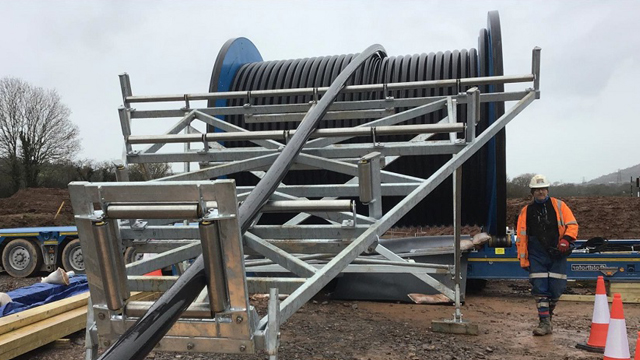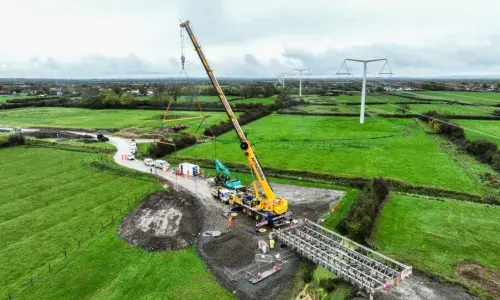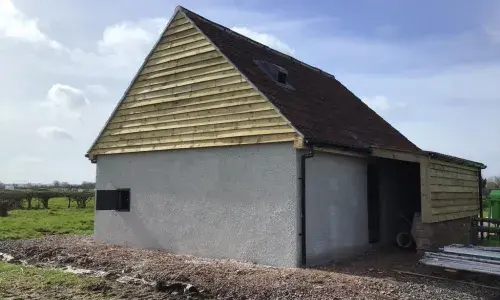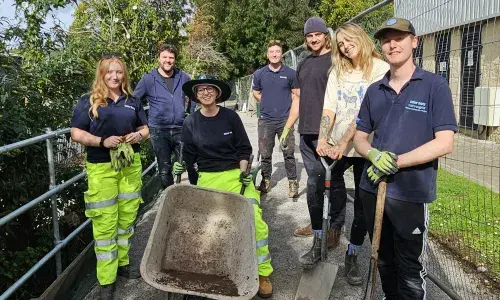
Installing a 400,000 volt cable under the Mendip Hills AONB
Area to be pylon-free for first time since 1960s
We are installing 8.5km of 400,000 volt underground cables from our new cable sealing end (CSE) compound at Loxton, south of the Mendip Hills Area of Outstanding Natural Beauty (AONB), north towards the new Sandford substation. Find out what this work involves and how we are progressing.
How does National Grid install underground cables?
- Excavating: We dig four cable trenches approximately 2m wide, 1.8m deep and a few metres apart. The soil is carefully removed and stored, and the bottom of each trench lined with sand.
- Cable laying: The cables are delivered on large drums and installed in ducts. Twelve cables will be installed, with three cables laid into four trenches in lengths of approximately 650m-1,000m.
- Jointing: Once the cables are laid in the trenches, we need to join the lengths together in a process known as ‘jointing’. This is carried out in jointing bays, where we install a temporary tent to provide a clean, dry environment where the underground cables can be safely connected together. A permanent small pillar will be installed to provide access for testing and maintenance.
- Reinstatement: The installed cables will be covered with cement-bound sand and a protective tile cover. The trenches will be carefully filled with the stored soil from excavation and the land reinstated. We will complete the work in 2024.
So far, National Grid has:
- completed advance landscaping around the location of the new cable sealing end (CSE) compound
- built temporary entrances and access roads to allow construction traffic to enter site from the local highways
- built a temporary site office and temporary construction compound north of Tarnock and up to four secondary temporary construction compounds along the route to minimise traffic movements on site. One of these secondary compounds will be located immediately south of the new CSE compound.
Current activities
- Completing construction of a new CSE compound east of the M5 motorway, to the south of the Mendip Hills AONB and the River Axe.
- Laying 8.5 km of 400,000 volt underground cables from the CSE compound south of the Mendip Hills AONB northwards to the new Sandford substation. By November 2021 80% of the total cables were in the ground, with completion expected by the February 2022.
Watch related video


